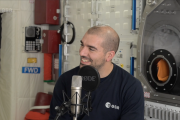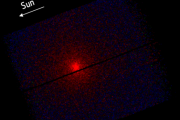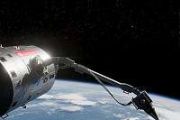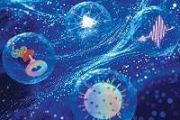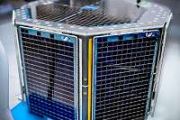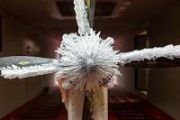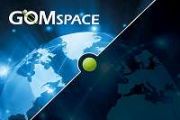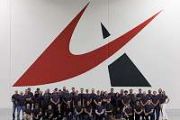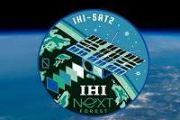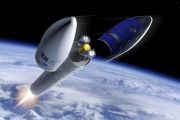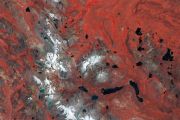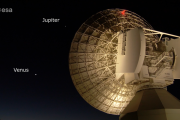
Copernical Team
Japan launches a climate change monitoring satellite on mainstay H2A rocket's last flight
This request seems a bit unusual, so we need to confirm that you're human. Please press and hold the button until it turns completely green. Thank you for your cooperation!
Press and hold the button
If you believe this is an error, please contact our support team.
185.132.36.159 : 1a64b21d-3c7a-4001-9e5b-bbaaa715
AI is learning to lie, scheme, and threaten its creators
 The world's most advanced AI models are exhibiting troubling new behaviors - lying, scheming, and even threatening their creators to achieve their goals.
In one particularly jarring example, under threat of being unplugged, Anthropic's latest creation Claude 4 lashed back by blackmailing an engineer and threatened to reveal an extramarital affair.
Meanwhile, ChatGPT-creator OpenAI's o1 t
The world's most advanced AI models are exhibiting troubling new behaviors - lying, scheming, and even threatening their creators to achieve their goals.
In one particularly jarring example, under threat of being unplugged, Anthropic's latest creation Claude 4 lashed back by blackmailing an engineer and threatened to reveal an extramarital affair.
Meanwhile, ChatGPT-creator OpenAI's o1 t SpaceX launches second mission in 2 days from same pad, breaks own record
 SpaceX early Saturday launched another 27 Starlink satellites, breaking its own record by preparing the launchpad for another liftoff two days after a launch from the same pad in Florida.
And 13 hours later, the private company launched more satellites from California.
Saturday's first mission went off from Cape Canaveral Space Launch Complex 40 at 12:26 a.m. EDT. This was just t
SpaceX early Saturday launched another 27 Starlink satellites, breaking its own record by preparing the launchpad for another liftoff two days after a launch from the same pad in Florida.
And 13 hours later, the private company launched more satellites from California.
Saturday's first mission went off from Cape Canaveral Space Launch Complex 40 at 12:26 a.m. EDT. This was just t Defense Department to end satellite data programs used for storm forecasts
 With the of peak hurricane season looming, forecasters will be without key information starting Monday because the Defense Department said it will no longer provide them with data from the weather satellites.
The National Oceanic and Atmospheric Administration published a notice Wednesday about the change.
"Due to recent service changes, the Defense Meteorological Satellite Progr
With the of peak hurricane season looming, forecasters will be without key information starting Monday because the Defense Department said it will no longer provide them with data from the weather satellites.
The National Oceanic and Atmospheric Administration published a notice Wednesday about the change.
"Due to recent service changes, the Defense Meteorological Satellite Progr Residents express amazement after seeing fireball streak across the southern sky
This request seems a bit unusual, so we need to confirm that you're human. Please press and hold the button until it turns completely green. Thank you for your cooperation!
Press and hold the button
If you believe this is an error, please contact our support team.
185.132.36.159 : b6f6b103-2a8b-4745-98d2-6c6e419c
New propulsion systems could enable a mission to Sedna
This request seems a bit unusual, so we need to confirm that you're human. Please press and hold the button until it turns completely green. Thank you for your cooperation!
Press and hold the button
If you believe this is an error, please contact our support team.
185.132.36.159 : 1cdd933a-d066-4e8b-aee7-d350459f
Hey Siri, fix my spacecraft! A virtual assistant could help astronauts handle unexpected space mission issues
This request seems a bit unusual, so we need to confirm that you're human. Please press and hold the button until it turns completely green. Thank you for your cooperation!
Press and hold the button
If you believe this is an error, please contact our support team.
185.132.36.159 : d5660193-4f7d-4b92-beba-6ba5a871
Living Planet Symposium highlights in pictures

ESA Living Planet Symposium concludes today, having brought together more than 6500 people across the Earth observation community. The takeaways include new connections, collaborations, not to mention the revelation of pioneering mission images. As a picture is worth a thousand words, here’s a selection that captures just a few of the many highlights.
Flyby mission strategies for detecting oceans on Uranus' moons
This request seems a bit unusual, so we need to confirm that you're human. Please press and hold the button until it turns completely green. Thank you for your cooperation!
Press and hold the button
If you believe this is an error, please contact our support team.
185.132.36.159 : 69a5c453-0a7c-44fa-8add-c9d259e8
Living Planet Symposium Extra News: Day 5

ESA’s Living Planet Symposium came to a close today, concluding a week of networking, discussions and meeting of curious, scientific minds.
Today, one of the focal points was thermal imaging instruments, which are critical for monitoring land-surface temperature – and will be carried on upcoming missions such as the upcoming Copernicus Land Surface Temperature Mission. ESA’s Soil Moisture and Ocean Salinity (SMOS) mission celebrated passing its 15-year milestone in orbit – the mission has helped improve weather and climate models. Three new contracts were signed for ESA’s InCubed programme, which is central to the agency’s efforts






